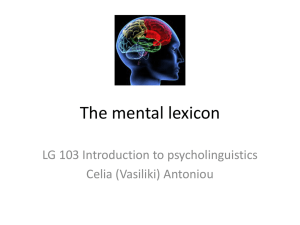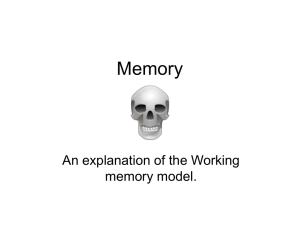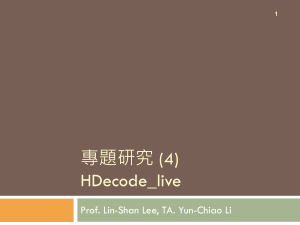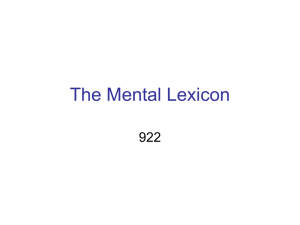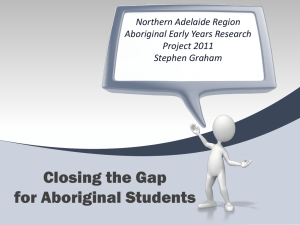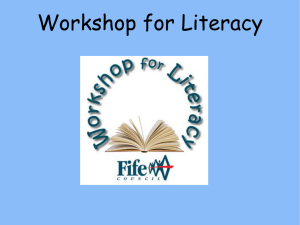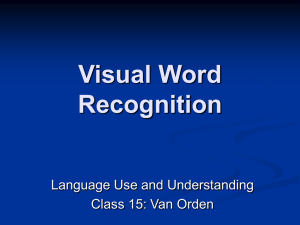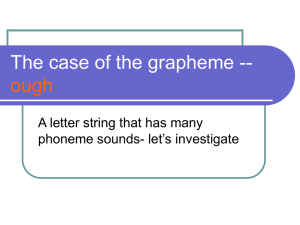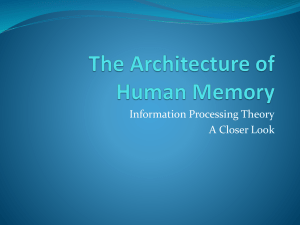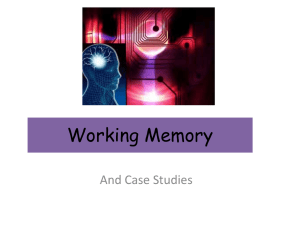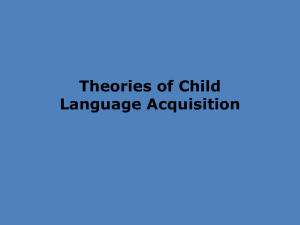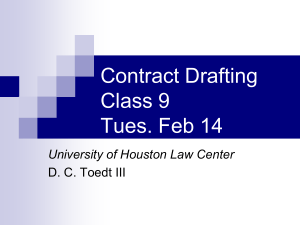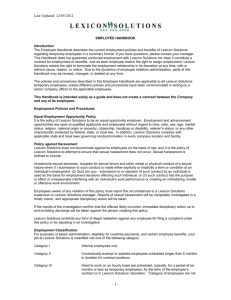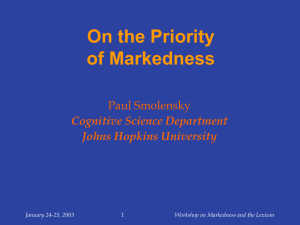PALPA - Columbia University
advertisement
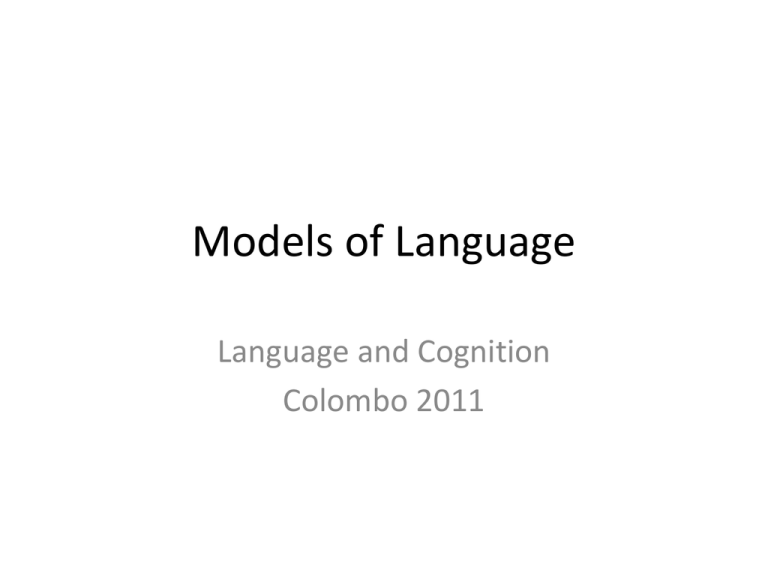
Models of Language Language and Cognition Colombo 2011 Principals of Cognitive Models • A means of conceptualising the stages involved in a mental activity • Examines components involved in processing information and the interconnections between them (“box and arrow”) or how information flows between centres via pathways • The boxes and arrows represent a function which can be independently impaired • Not yet able to link aphasic symptoms to discrete anatomical structures Principals of Cognitive Models • Provide a framework for assessment and treatment • Different models consider different aspects e.g. single words (Ellis and Young 1988) and sentence processing (Garrett 1984). • Different models share common features, e.g. all have distinct semantic and phonological levels • We will be focusing on one lexical model widely applied in SLT Assumptions • Using this modelling make several assumptions: – Functional modularity – modules/boxes can operate independently of other components – Anatomical modularity – modules represent different parts of the brain. Lesions can affect selected modules only, leaving others unimpaired – Universality – all people have the same fundamental language system (though we might not agree on the system) – Subtractivity - brain damage can only remove elements from the system, not add them • N.B: • Lesions in the brain vary from person to person dependent on: – The precise location of the damage – Which white matter fibre tracts are damaged • Therefore identical patterns of deficit in any two people unlikely. • Helpful to look at which boxes/arrows are damaged/intact to help explain pattern of performance. • Still attempting to relate to brain structures (Hillis 2001) PALPA Psycholinguistic Assessments of Language Processing in Aphasia Introduction print Mouse mouse Abstract Letter Identification “yes, these are letters” m o e Visual Input Lexicon Semantic System Phonological Output Lexicon speech “yes, this is a word” s u Mouse = N “yes, this word means something” “this word is pronounced /maUs/” “mouse” print Blik blik Abstract Letter Identification “yes, these are letters” b l i Visual Input Lexicon c k “no, this is not a word” Semantic System Phonological Output Lexicon speech • This doesn’t fit with the facts… • So there must be another way to read written words print Blik blik Abstract Letter Identification Visual Input Lexicon Semantic System Grapheme to Phoneme Conversion b=/b/ , l=/l/, i=/I/, k=/k/ Phonological Output Lexicon “blik” speech • The lexical route cannot read nonwords at all • The nonlexical route cannot read irregular spelling-sound correspondences • We need (at least) both of these routes to be able to read both real and pseudo words • What about naming an object or a picture? pictures, seen objects print Abstract Letter Identification Visual Object Recognition System Semantic System Phonological Output Lexicon speech Visual Input Lexicon Grapheme to Phoneme Conversion • What about recognizing or repeating speech that you hear? pictures, seen objects speech Auditory Phonological Analysis “yes, I hear speech sounds” Phonological Input Lexicon “yes, that’s a word” print Abstract Letter Identification Visual Object Recognition System Semantic System Phonological Output Lexicon speech Visual Input Lexicon Grapheme to Phoneme Conversion • What about being able to repeat a word you never heard before – or a pseudoword? pictures, seen objects speech Auditory Phonological Analysis Phonological Input Lexicon print Abstract Letter Identification Visual Object Recognition System Acoustic to Phonological Conversion Semantic System Phonological Output Lexicon speech Visual Input Lexicon Grapheme to Phoneme Conversion • What about people who do not understand what they hear, or what they read, but can still say it? pictures, seen objects speech Auditory Phonological Analysis Phonological Input Lexicon print Abstract Letter Identification Visual Object Recognition System Acoustic to Phonological Conversion Semantic System Phonological Output Lexicon speech Visual Input Lexicon Grapheme to Phoneme Conversion • What about written output? pictures, seen objects speech Auditory Phonological Analysis Phonological Input Lexicon Abstract Letter Identification Visual Object Recognition System Acoustic to Phonological Conversion Sound to letter rules print Visual Input Lexicon Grapheme to Phoneme Conversion Semantic System Phonological Output Lexicon speech Orthographic Output Lexicon writing The final product….. • Kay, Lesser & Coltheart, 1996 • PALPA model • Assessments for each box and arrow – evaluating effects of different inputs and outputs on a damaged language system • NOT intended to be used in its entirety • Remains the only psycholinguistically motivated tool for language assessment
